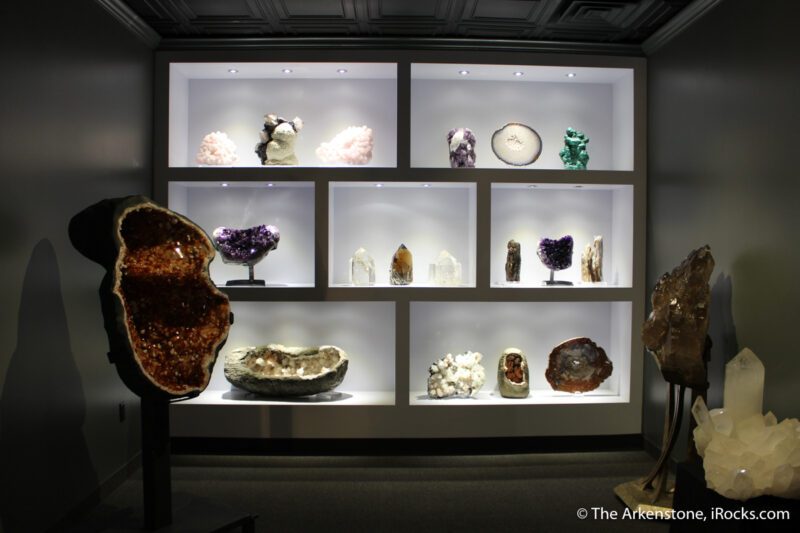An Evolution of Dr. Lavinsky's The Arkenstone Gallery
I was born in 1972. While still a youth, I liked dinosaurs of course (who doesn’t?!) and collected fossils in central Ohio by the side of the road – fossils first, crystals later! I went weekly to see the science exhibit of rocks and fossils at COSI in Columbus (a science museum) and marvelled at the natural beauty of these things. I was “found” by an older collector named Carlton Davis collecting fossils by the side of the road in rural central Ohio (Carlton, a well-known collector, was a member of the Columbus Rock and Mineral Society – the wild adventurer, to my mind, who traveled each year to Tucson to buy and compete in exhibition).
After exposure to the club, despite being half the age or less of most folks there, my interest in minerals grew rapidly – a testament to the patience and time spent in those days by mentors in the community and in the local club circuit. There were also books and magazines to read, although they were more scientific and taught little about actually curating collections of these treasures as an asset and for fun – that, I learned by going to small shows and events throughout the Midwest. John Medici, another club member, took me on my first field trip to collect crystals in a quarry at age twelve to Lime City, Ohio (my mom had to go on the museum bus with me as a minor, for liability reasons. She still is mad I lost a boot in the gripping mud of the place…)
To fund my growing hobby, (and that is all I intended it to be!), I essentially became a part-time mineral dealer by age fourteen, selling self-collected Ohio minerals to support my emerging hobby and setting up at the Columbus and Cincinnati mineral shows in their swap areas (where you sold items for “monopoly money” that could be turned in to the real dealers for specimens). I realized that “HEY! As a kid even, I could own stuff as good as in some museums, and handle and hold these things from Nature from millions of years ago?!” and that seemed a crazy revelation.
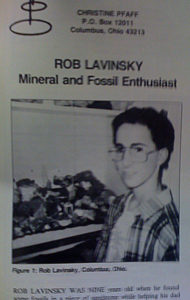
A young Rob Lavinsky appeared in the column “Mineral and Fossil Enthusiast”, Rocks & Minerals magazine, circa mid-1980s. The photo is taken in his “rock closet” equipped with plastic shelves cut to wedge in.
It propelled me to a fascination with the natural world that led to a Doctorate in science later, but ironically set the stage for a different career in selling these things and building museums as well – I just had no idea, at the time. I also met small town dealers and field collectors, Neal and Chris Pfaff, who were phenomenal field collectors and “the most fair mineral dealers ever,” and ended up working for them while I was in junior high school in Ohio. I took the bus up after school, 2 days a week, and helped them and learned from them. I also had a high truancy rate for missing afternoons to leave early and go play with rocks… At that time the Pfaffs specialized in offering tables at shows with specimens that were $10 each or 3 for $25. Selecting and sorting such specimens from their finds taught me a lot about quality and value.
Many days I sat sorting minerals and gluing thumbnail specimens to toothpicks while watching Star Trek reruns. At shows in Ohio, I would run around looking for bargains to trade or buy and then sell “finds” from card tables in the “junior dealers” area of those shows (they used marked monopoly money to make “swap tables” there in the day). I started with $5/10/50 specimens bought with mowing lawns and shoveling snow, combined with spending birthday money on “rocks” instead of video games. My first $500 mineral specimen was in the mid-80s, as I saved up a year’s worth of these “swap dollars” to buy a special Indian apophyllite specimen. At first, I tried collecting everything, but he quickly focused on calcites as a species I could collect and really build something around as a “collection” instead of as a “pile of random stuff.” I even started exhibiting at local Ohio shows.
A harsh judging when I was 17 or 18 years old at the Berea (Cleveland area) Show admittedly reduced me to tears and convinced me that my talents were not in labeling or organizing an exhibit case at that time! I bought my first $1000 specimen in those days, and my poor mother had a fit about “the rock shop lady” taking advantage of me when I proudly showed her on my return home via the city bus (had no car). View the video below where it’s featured in the last few minutes. I still have it to this day and am still friends with that wonderful mentor from the local rock shop. Gloria Olsen is 83 now and just visited me here in Dallas with her affable husband Don.
The mineral hobby transitioned from summer collecting to a business after I went to college (and to my first BIG SHOW – the Tucson Show) in 1991. During my sophomore year at Rice University, I ran out of money and realized that in order to graduate while doing science lab research work in the evenings and weekends as well, I would need to support myself through the hobby instead of getting a “real job.” Minerals beckoned! I did shows all over the country each summer, and local street fairs with agate slabs, geodes, and earrings. I also forged links with many sources and dealers, in my travels.
Once, I came across a mineral collector from Milwaukee in a quarry in Indiana, and in getting to know him, found that he had “met a guy who knew a guy” while collecting in a quarry near Atlanta, and turned up a pallet of the old First Issues of Sports Illustrated with a foldout spread of old baseball cards inside. We spent the next 2 years traveling to all the small cities in the eastern USA, doing rock shows and selling those SI issues 2-5 at a time to sports card and baseball card shops along our routes. It paid for a lot of travel expenses!!! Today, they would have been worth a million dollars and more if we had kept them. But at the time, they paid food and gas while we drove around selling and buying mineral specimens.
A funny story about my rise: Sometimes one event stands out. As an undergraduate student at Rice University (a BS in biochemistry and a minor in ancient civilization), I was conveniently located across the street from the Houston Museum of Natural Science. In 1992, the Fabergé exhibit came to Houston, curated by scientists from the Fersman Museum in Moscow, Russia.
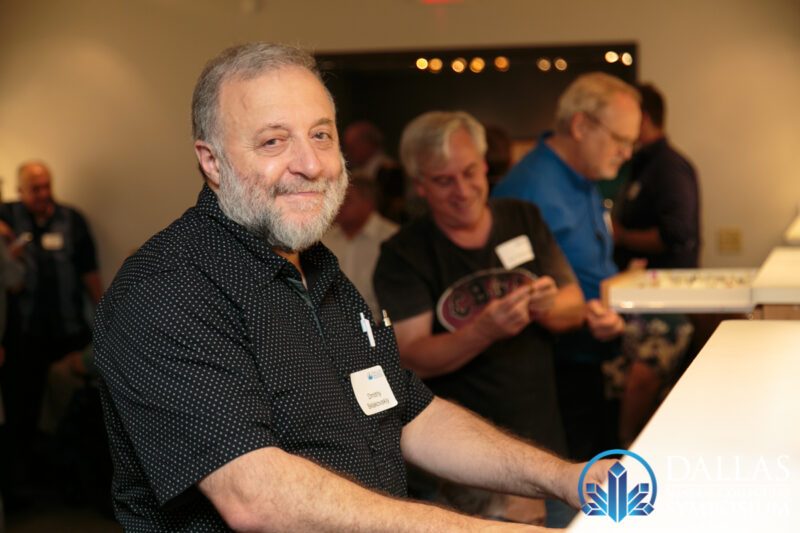
Dr. Dmitriy Belakovskiy explores drawers of minerals at the 2017 Dallas Mineral Collecting Symposium
Geologist, explorer, and Moscow native Dr. Dmitriy Belakovskiy (now a close friend!) was sent to accompany the exhibit with a one-way ticket from Moscow and very little money for living expenses and food with his companions. Joel Bartsch, the museum mineral curator at the time who knew me, introduced them to me because he knew I spoke Russian (from high school language class – it was interesting and it was the fifth period, so I could play hookie after that and go work on rocks…). Between my two years of high school Russian and Belakovskiy’s rough English, we became friends. In a gesture of kindness to pay their living and food expenses during the exhibit, Bartsch gave these guys two folding card tables to sell minerals (sent over from Russia by colleagues who took them from expedition collections in the basement of the Russian museums!) at the exit from the glamorous Fabergé exhibit—most of them at $1, $2, $5, and $10 each! Between classes, I walked over from Rice University and bought from the tables, wheeling and dealing with the specimens to my own contacts.
As a college student with fast computer access (for that time), I was lucky! Nobody had fast computer connections in 1992, and I lived in a dormitory with free computers and a T1 line. I started some of the first email swap/sell lists before the days of websites. This enabled me to sell to dealers and collectors I had known since childhood in Ohio and from the show circuit. I made my first large deals over $2000 with the Fersman Museum, and I was hooked as a dealer, in hindsight, even if it took a few years to sink into me what was obvious to others. My business grew and grew in my spare time as an undergrad, and I spent a lot of time visiting collections and learning from collectors, who became friends and customers. Those crazy early deals with the Russians really set me on a new road.
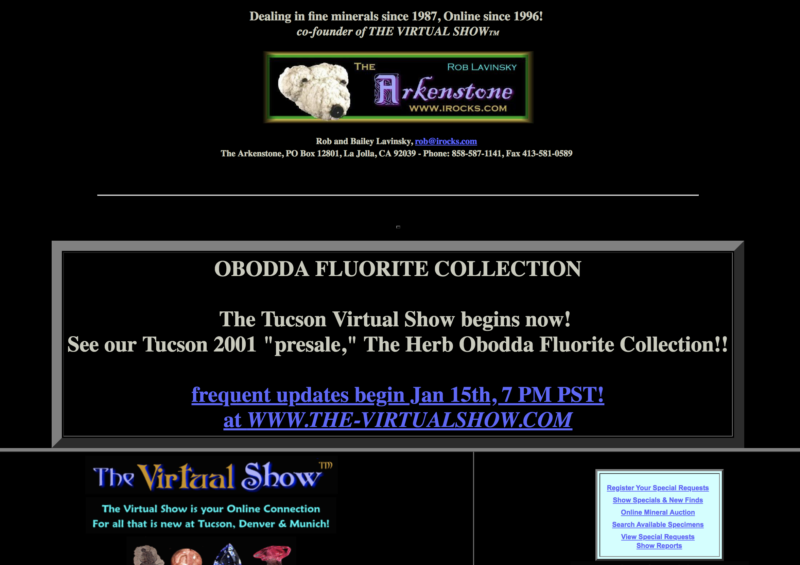
Screenshot of iRocks.com in February of 2001 – a rare archival photo showing the announcement of The Virtual Show, the first online offerings live from Tucson!
INTERNET! Who knew? I had time, I had free computers and access, so one day in 1994 I bought “HTML FOR DUMMIES” at the Campus Bookstore, and tore into it. I put up my first website, www.TheArkenstone.com, at that time. Nobody could spell it, and people thought I was from Arkansas, so I changed it to iRocks.com shortly after. The internet was wide open at the time. No Google. No Amazon. No eBay. Just a few sites. I put mine up and kept growing it over the years, retooling again and again as the web developed around me, and we found that the mineral market is indeed worldwide, and grew bigger every year once the information and context barriers were broken by the World Wide Web. Business grew. I used to mail VHS tapes around the world with homemade videos of pieces I had for sale. The Internet changed everything.
By design, my website became the largest and one of the first websites with a purposefully broad catalogue of species, quality, and pricing and showing the values of contemporary collector specimens, rather than more common “rock shop” things for the public. I was propelled by the volume I was selling on the Internet to become a “Main Show” dealer at Tucson, our big show – the only major dealer who came up through the web at the time to do so.
At the time I was transitioning to be a dealer in Tucson, I forged an alliance with John Veevaert, a former customer who had become a good friend and fellow website mineral dealer by the late 1990s. Together, we built something we called “The Virtual Show” to convey the energy and excitement, and the new finds, of being onsite at the annual Tucson Show. We sold minerals in gallery and auction formats, and in fact both started our auctions at that time, pushing the frontiers of mineral collecting with the idea and the publicity. Not all folks accepted that the internet was a contribution to the hobby at the time! Few dealers actually understood we were offering specimens in the hallway rooms, to the whole world. Nobody saw the size of the community out there, except us on the statistics reports. TVS ran each year, with specimens and news reports, for perhaps 5 years before we were forced to abandon it due to the workload and went our separate ways. It was a fun adventure I recall fondly now! We both grew in the process, and John helped me as much as I helped him at the time.
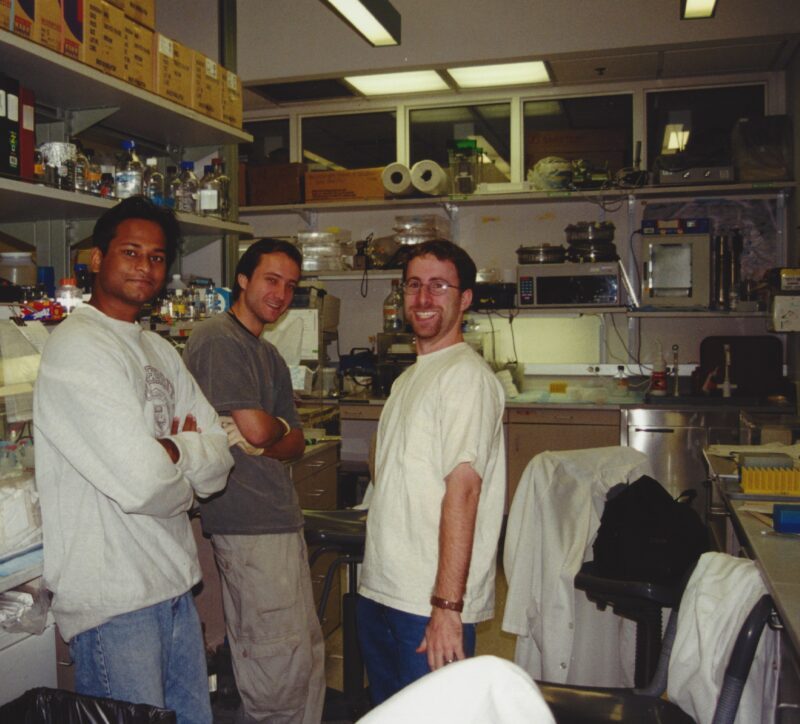
Dr. Lavinsky in the grad lab…. and he hasn’t been warned that this photo is being published. Save this photo, fast, before he makes this affable employee remove it!
Despite the lure of dropping out to become a mineral dealer, I loved the science I was involved in and still thought I’d have a career in biotech and academia, so I continued my schooling at UCSD. I earned a Ph.D. in Molecular Genetics (“Genetic Engineering”) in 2000 (published in Nature, and then my thesis ended up as a feature paper in Proceedings of the National Academy of Sciences). While writing a doctoral thesis and with a child on the way, I realized the life of a postdoc working in a science lab was suddenly not quite as attractive. I debated whether to go into biotech or work at home as a mineral dealer. With the gracious permission of my wife, I chose the latter – and never looked back.
Since those early Tucson days, I have kept growing my business only as I helped grow the whole trade itself and have been a dealer in the Tucson Gem and Mineral Show™ (TGMS) for over twenty years; promoting the field as a whole and its educational/inspirational opportunities on the website and encouraged both juniors and adults to come into this field. To build on the educational aspect of the hobby, in close partnership with Dr. Gene Meieran, formerly senior Intel Fellow at Intel Corp, I started an annual mineral symposium in Dallas that now attracts hundreds of collectors for a mineral immersion weekend. I also signed on to help produce a PBS television reality show, Mineral Explorers.
Another of my projects was to be a sponsor of The World’s Most Precious Treasures, a reality television documentary following gem tanzanite from the mine to the market in Tucson; it was made by French National Television in association with the gem company Cartier of Paris and has aired in Europe now.
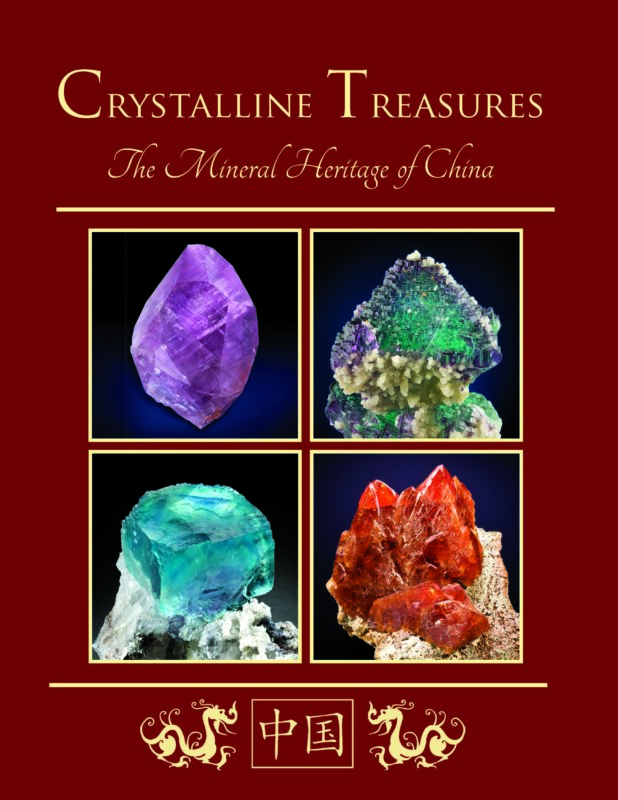 In addition, I organized and planned the Chinese Crystalline Treasures exhibition at the University of Arizona in 2013 in conjunction with partners at the university. The book on the exhibit (online: www.ChinaCrystallineTreasures.com) is really a short introduction and primer to collecting fine minerals in general; and later it was published in Chinese by the Hunan Provincial Government (the first officially authorized and translated U.S. mineral magazine issue of any kind in China). It’s also available as a free interactive e-book.
In addition, I organized and planned the Chinese Crystalline Treasures exhibition at the University of Arizona in 2013 in conjunction with partners at the university. The book on the exhibit (online: www.ChinaCrystallineTreasures.com) is really a short introduction and primer to collecting fine minerals in general; and later it was published in Chinese by the Hunan Provincial Government (the first officially authorized and translated U.S. mineral magazine issue of any kind in China). It’s also available as a free interactive e-book.
This is the template for a future museum exhibition, hopefully coming soon to Dallas and then Los Angeles or another city in 2021 or 2022! I have been lucky to be accepted by the community of museums in China and have taken the educational mission in China very seriously, traveling there often for talks and experiences, as well as buying trips.. It has truly been an adventure, and not one that I knew I would have when I started “collecting rocks” as a kid!
After maintaining several different gallery locations, I’m excited to have our new gallery in Dallas, opened in early 2018, to showcase these natural treasures for what they are: Art.
